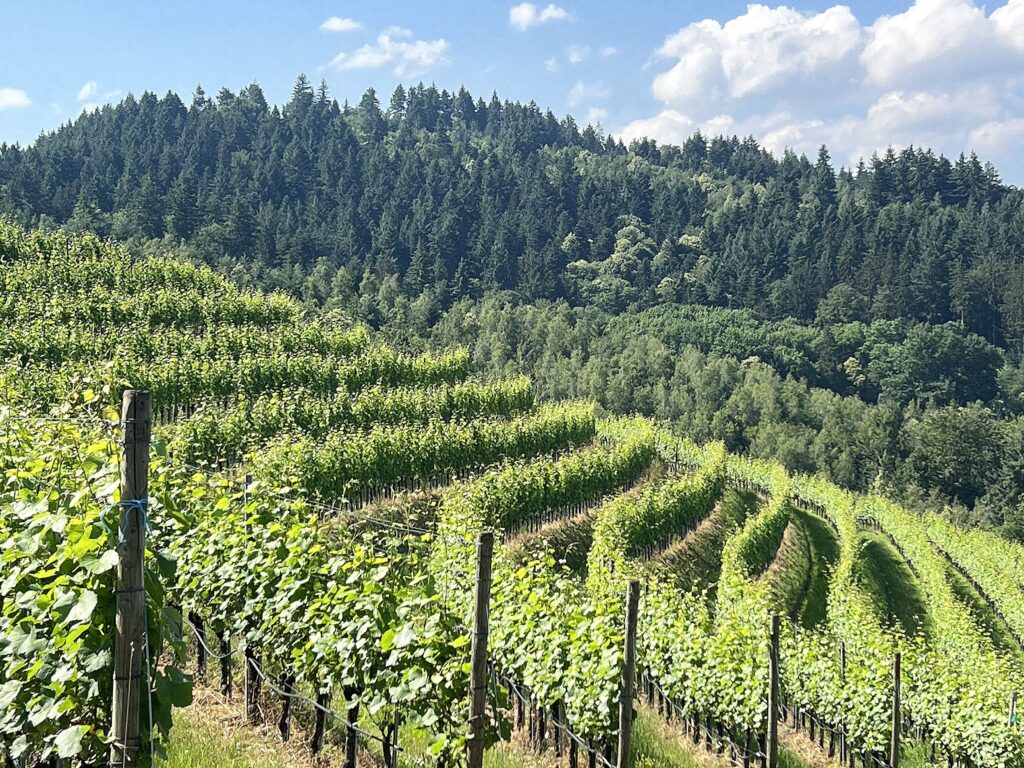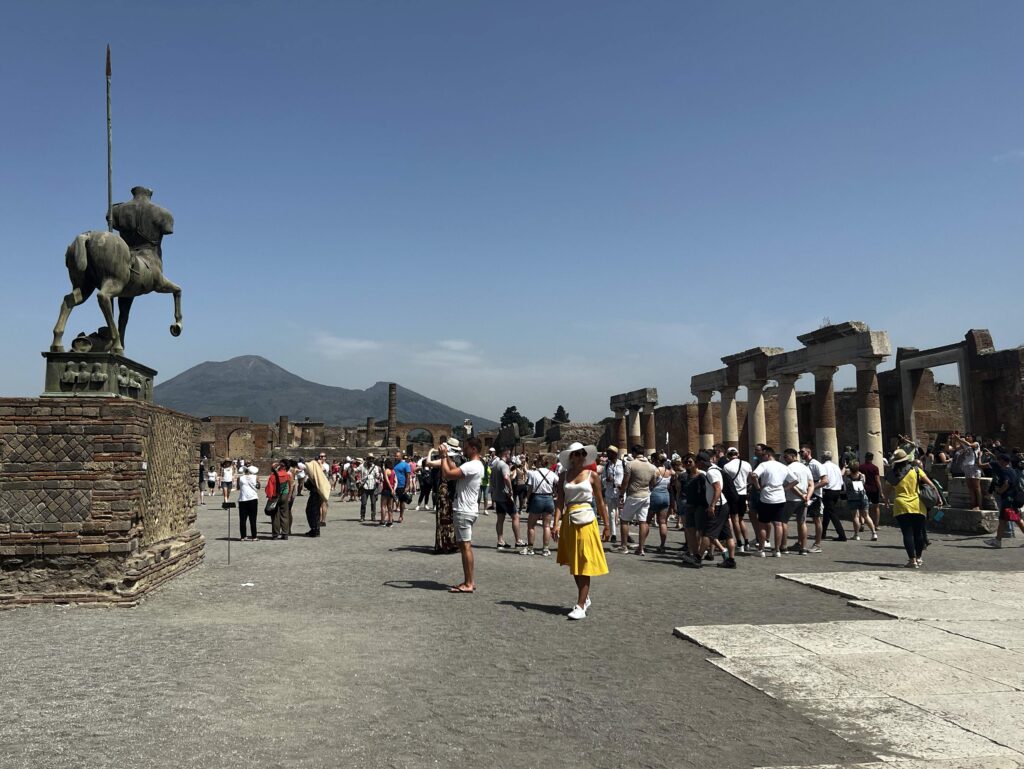Every city should have a Seattle Center. Packed with families, groups of friends, and visitors from around the globe, the 74-acre complex is like a giant playground, offering one of the world’s most famous tower observatories, a museum that pays tribute to Seattle’s own glassblowing celebrity, a museum that celebrates pop culture, a children’s museum, and lots more. You can easily spend a whole day here, if not two. Heck, I’ve been to the Seattle Center several times and I still haven’t seen it all. That’s because in addition to newer things to see and changing exhibitions, older attractions keep re-inventing themselves. Even the iconic Space Needle.

About Seattle Center
The concept for the Seattle Center was born with the 1962 World’s Fair. Called Century 21, the fair was based on the themes of science, the space age, and the future. A futuristic Coliseum (now KeyArena), the Space Needle with its flying-saucer-shaped observatory and revolving restaurant, the U.S. Science Pavilion (today the Pacific Science Center), and other structures were constructed for the fair, with a brand new monorail that connected the fairgrounds and downtown in about two minutes. Close to 10 million people attended the World’s Fair, including John Wayne, Walt Disney, Bobby Kennedy and his family, astronaut John Glenn, Prince Philip of England, and Elvis Presley, who had come to film It Happened at the World’s Fair. There was even an “adult entertainment” section, where guests could take in a Las-Vegas-style show, an adult puppet show (that’s something I’ve never heard of) and “Girls of the Galaxy,” where naked women posed for camera-toting visitors (this attraction was quickly closed
down by authorities). The Seattle World’s Fair, it’s fair to say, put Seattle on the map.

The Space Needle

It cost $4.5 million to build the Space Needle for the 1962 World’s Fair, a paltry amount (even when adjusted for inflation) compared to the $100 million in renovations that just took place. Whereas the old observatory had a wire cage separating viewers from the views and a rather old-fashioned atmosphere despite its space-age theme a half century ago, the new renovated tower has all the bells and whistles of today’s technology, employing glass that’s stronger than steel to provide seamless views of downtown Seattle, Puget sound, Mt. Ranier and other city landmarks. There are two decks, with the upper one sporting glass panels and glass benches that tilt outward, giving the slight illusion of floating out above the city. The glass is so spotless (cleaned by a full-time staff) that you could eat off it. On the lower deck, you can also, for the first time, see what’s beneath the Needle

due to the world’s only revolving glass floor. I’ve seen glass floors in towers before, in Macau and Tokyo, but I’ve never seen adults and children just plop down for selfies or to gaze in wonder at the world below. Bonuses included in admission tickets are free photographs taken by wandering photographers with faux backdrops and a virtual reality bungee jump from the Needle. It’s also cool that you can walk around with a local craft beer or glass of wine as you enjoy the views, though my spilled beer on the glass floor created extra work for a human glass cleaner. He seemed used to it.

Museum of Pop Culture
I visited this museum back when it was called the Experience Music Project. It’s nothing like it was back then. Whereas the museum used to center on music, with a big emphasis on the Seattle music scene,

the Museum of Pop Culture now celebrates not only music but also contemporary popular culture. There are still exhibits showcasing local legends Jimmy Hendrix, Pearl Jam, and Nirvana, but the majority of the museum now also covers science fiction, fantasy, horror, and other genres in film and TV, complete with video interviews with directors and other creators, interactive touch screens, and other hands-on activities, including video games and the Sound Lab where you can bang away on drums, play keyboards or try your hand at sound mixing. In the horror section, filled with zombies, vampires and other props and costumes of some of our scariest movies, there’s the

soundproof “Scream Box,” which records your best shot at screaming your head off. Although exhibitions change, you might see film memorabilia and costumes like the cyborg from The Terminator, the hover board used by Michael J. Fox in Back to the Future Part II, the skimpy costume worn by Daryl Hannah in Blade Runner, and the dress worn by Judy Garland in Wizard of Oz. The building, designed by world-famous architect Frank Gehry, has been called everything from downright ugly to innovative to–my opinion–perplexing. In any case, it’s so sprawling, with various rooms on different levels devoted to its themed exhibits, it’s easy to get lost. Maybe that’s the point.
Chihuly Glass and Garden
I was almost relieved to see that the Chihuly Glass and Garden attraction was pretty much the same since my last visit three years ago. After all, how could you improve on the fantastical creations of Dale Chihuly? I’d seen his works long before this museum opened in 2012, in hotel lobbies in Hong Kong and Macau, in the Oklahoma City Museum of Art with one of the world’s largest Chihuly collections, in a temporary exhibit at the Missouri Botanical Gardens and in my own hometown, the Spencer Museum of Art. Once you see a Chihuly, you never forget it.
Born in 1941 in Tacoma, Washington, Dale Chihuly is one of the world’s best-known glass artists. Using glass, neon, ice, acrylic paint, charcoal and polyvitro (whatever the heck that is), he has revolutionized the way we look at glass. He has pieces in more than 200 museums around the world and has created installations that have graced Venice and Jerusalem. The Chihuly Glass and Garden isn’t large, just eight exhibition rooms of various sizes filled with different themed collections, but there’s so much to take in you’ll want to dawdle. Rooms are dark, making the colorful glass creations seem like a surreal wonderland, especially the Sealife Room, which looks like a living coral reef from another planet, and my favorite, the Mille Fiori, a colorful garden of glass. There’s also a glass house, with hanging glass sculptures and the Space Needle rising above it. I lusted after the outdoor garden, filled with blooming flowers and glass works of art that seemed almost organic.






Other things to see and do
There are also many other things to see and do in the Seattle Center. For families, other attractions worth checking out include the Pacific Science Center with its interactive exhibits, a butterfly house, two IMAX theaters, virtual reality experiences, and a planetarium; and the Seattle Children’s Museum, which lets children explore Ghana,

the Philippines and Japan, go grocery shopping, build a house or a rocket ship, and, well, learn as they play. At the free Bill & Melinda Gates Foundation Discovery Center, visitors can learn about innovative solutions to some of the world’s most pressing problems, including poverty, education and health. The KeyArena serves as a venue for concerts, sports (both the Seattle Storm and Seattle University men’s basketball teams play here, as well as the Rat City Rollergirls) and other forms of entertainment. There are fountains, sculptures, totem poles, a food hall, a graffitied section of the Berlin Wall, and other works of art. There’s also a year-long roster of festivals, celebrations and events, including a winter ice-skating rink, a Mexican Day of the Dead celebration, free outdoor movies on selected Saturdays in summer, free concerts, and cultural festivals like the Hmong New Year Celebration, an Italian Festival, and CroatiaFest.
My stay in Seattle happened to coincide with the annual Seattle HEMPFEST, just a short walk from the Seattle Center. You’ve gotta love this town.
For more information on the new Seattle Space Needle, see my article below in Getting On Travel (which has sadly ceased publication):








